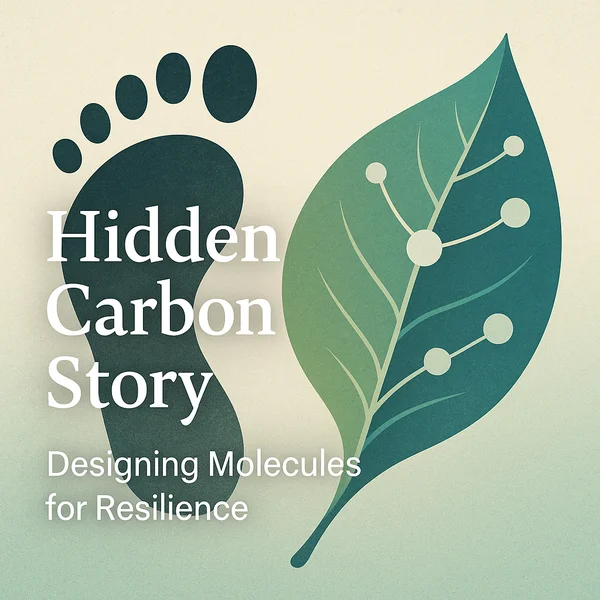“Every molecule tells a carbon story. In specialty chemistry, the smallest building blocks can create the biggest climate impacts. The future is not just greener chemistry—it’s resilient chemistry.”
When we talk about the carbon footprint of chemicals, the focus is usually on how they are made. Energy used, effluents and byproducts, solvents used, waste generated.
That’s important, but there’s a deeper story hiding in plain sight: the carbon handprint of specialty molecules.

Beyond Footprints: Carbon Handprints
A carbon footprint is the harm caused during production. A carbon handprint is the benefit a product creates in its application. Specialty chemicals often have small production volumes but massive downstream impact.
Think of OLED intermediates that enable energy-saving displays, advanced coatings that extend the life of infrastructure, or high-purity pharma building blocks that streamline synthetic pathways and reduce overall waste. Each of these molecules carries a hidden role in making industries more climate resilient.
Why this matters now:
- Electronics: An emitter that lowers power consumption in billions of devices can also save more carbon than was ever spent making it.
- Agrochemicals: Precision intermediates that reduce water and fertilizer use, directly cut emissions from one of the world’s largest emitters of carbon.
- Pharma & Materials: Cleaner building blocks reduce process steps, solvent demand, and regulatory bottlenecks. Thus compounding sustainability benefits.
In all these cases, the value isn’t just in grams sold. It’s in the climate dividends the molecule pays forward.
Designing for resilience
What if we designed molecules with not only performance in mind but also their climate multipliers? That would mean:
- Selecting minimal embedded carbon pathways right from the start.
- Prioritize molecules that extend durability or efficiency in end-use sectors.
- Mapping the handprint vs. footprint balance as part of the R&D decision making process.
This flips the script. Specialty chemicals are no longer niche enablers in hidden corners of supply chains, they become critical levers for climate resilience.
The Bigger Message
Green chemistry is not just about reducing harm. In specialty sectors it is about amplifying the benefits.
By recognizing the hidden carbon story of our molecules, we can move beyond compliance and begin designing chemistry as a climate strategy.
The next frontier is clear – every molecule we make should carry not only value, but also resilience.
Want to know more. Click Here.
